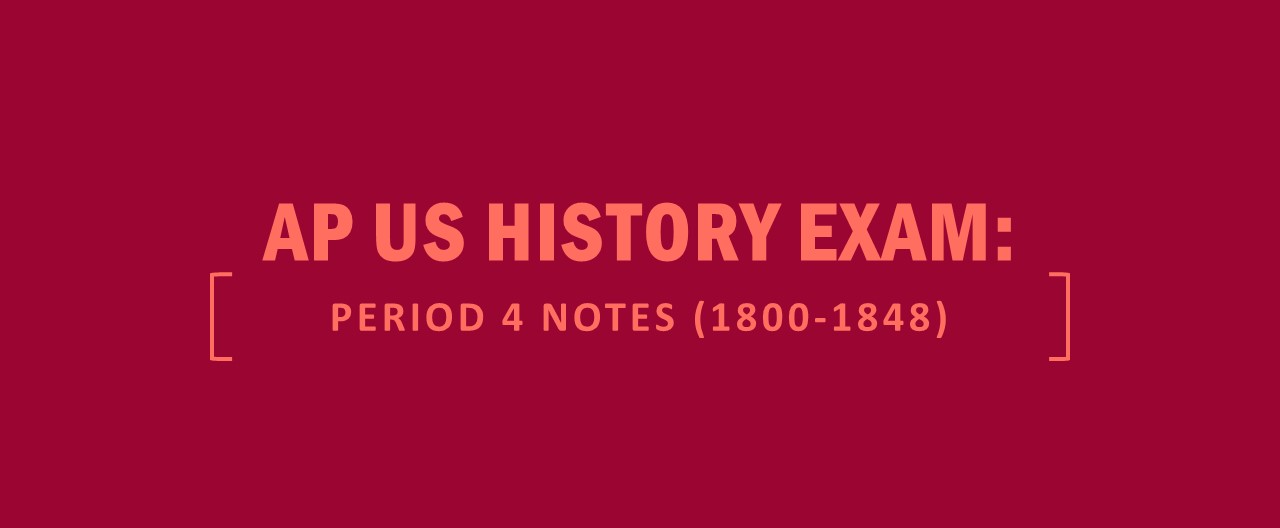
- AP Calculus
- AP Chemistry
- AP U.S. History
- AP World History
- Free AP Practice Questions
- AP Exam Prep


AP U.S. History Long Essay Example
The second part of Section II of the AP exam contains three long essay questions—you must respond to one. The AP U.S. History long essay question assesses your ability to apply knowledge of history in a complex, analytical manner. In other words, you are expected to treat history and historical questions as a historian would.
This process is called historiography—the skills and strategies historians use to analyze and interpret historical evidence to reach a conclusion. Thus, when writing an effective essay, you must be able to write a strong, clearly developed thesis and supply a substantial amount of relevant evidence to support your thesis and develop a complex argument.
The College Board’s characteristics of a high-scoring long essay question response are listed below. Note that the requirements are very similar to those of the DBQ; the primary difference is that any requirements related to use of the documents are removed from the scoring requirements for the long essay question.
[ RELATED: Reading Strategies for AP US History Exam ]
Long Answer Sample Question
Evaluate the extent to which the migration of European colonists and the resulting encounters with American Indians affected social patterns in the period from 1495 to 1650.
Step 1: Analyze the Prompt
As you choose which question you will answer, begin thinking about what your thesis will entail and how your essay will demonstrate a complex understanding. The notes of a sample high-scoring writer are below.
Thesis (with complex understanding): Spanish, French, and British each used territory differently; result: distinct social patterns
This writer claims that three different countries’ approaches to settling territories resulted in different types of social development, but other types of thesis claims are possible. For instance, the thesis could make a single claim about overall social patterns (such as “Europeans’ economic goals in the New World and their attitudes of superiority over American Indians resulted in exploitative and hierarchical social structures”) or focus on only one or two European nations.
Step 2: Plan Your Response
- Context : motives for European exploration: new technology, navigation techniques, and trade routes
- Thesis (with complex understanding ): Spanish, French, and British each used territory differently; result: distinct social patterns
- goals: wealth and spread Catholicism
- methods: mining, large-scale agriculture, encomienda, disease/weapons, missions
- results: forced assimilation, social structure
- goal: fur trade
- method: mutually profitable trade relationships
- result: alliances
- goals: permanent settlements, Jamestown, religious freedom (New England)
- methods: occupying more land for farming, smallpox, Metacom’s War
- results: deaths of indigenous populations
- ¶ conclusion: where Europeans sought permanent settlements or forced labor, resulted in American Indian population decline, upheaval, and threats to tradition
Step 3: Action! Write Your Response & Step 4: Proofread
See the following high-scoring response, and be sure to read the rubric to help you identify what makes this response effective. Think about what features you can incorporate into your own free- response answers.

Sample High-Scoring Response
The Spanish had two major goals: to gain wealth and to spread Catholicism to the native populations. Realizing the potential to mine precious metals and profit from large-scale agriculture, the Spanish forced American Indians into labor, such as through the encomienda system. Violence and deception were often used to subdue the indigenous populations, aided by the technological superiority of European weapons and the spread of devastating diseases. Although some Spanish came as missionaries with the goal of converting American Indians to Christianity and often protested the abusive treatment of the American Indians, even missions sometimes essentially forced labor and coerced assimilation to Spanish culture. In the long term, a hierarchical social structure developed in the Spanish colonies in which the Spanish-born and their descendants (peninsulares and creoles) dominated those of mixed background (mestizos and mulattos) and especially those of pure African or American Indian heritage. Overall, millions perished between disease and mistreatment, devastatingly weakening traditional cultures but enriching the Spanish.
The French differed from the Spanish in their relationship with the indigenous populations. Using the St. Lawrence River for transportation and trade, the French profited from trading fur pelts, particularly beaver, with the American Indians, and then sending the pelts to Europe. These traders profited from the knowledge and goods of the American Indian populations who lived there, and certainly desired to develop mutually profitable relationships with them. Overall, this more cooperative relationship helped preserve American Indian cultures and led to alliances between the French and different American Indian nations. These alliances benefited the French in later wars with the British.
You might also like

Call 1-800-KAP-TEST or email [email protected]
Prep for an Exam
MCAT Test Prep
LSAT Test Prep
GRE Test Prep
GMAT Test Prep
SAT Test Prep
ACT Test Prep
DAT Test Prep
NCLEX Test Prep
USMLE Test Prep
Courses by Location
NCLEX Locations
GRE Locations
SAT Locations
LSAT Locations
MCAT Locations
GMAT Locations
Useful Links
Kaplan Test Prep Contact Us Partner Solutions Work for Kaplan Terms and Conditions Privacy Policy CA Privacy Policy Trademark Directory

APUSH Long Essay Question Example 1
Evaluate the extent to which european contact and colonization impacted the indigenous populations and cultures in the americas between 1491 and 1800..
- What were the motivations behind European exploration and colonization in the Americas?
- How did European contact affect the indigenous populations in terms of health, society, and politics?
- What were some key moments or events that exemplify the interaction between Europeans and indigenous populations?
- Were there any areas or tribes that resisted or adapted differently to European influence?
- How did indigenous cultures change or adapt as a result of European contact?
- Thesis/Claim (1 point): The essay presents a clear and defensible thesis in the introduction. The thesis is evident in the statement, “The impact of European contact and colonization on indigenous populations and cultures in the Americas between 1491 and 1800 was profound and multifaceted.” This thesis directly addresses the prompt and sets the stage for the arguments that follow.
- Contextualization (1 point): To earn this point, students must describe a broader historical context relevant to the prompt. The essay provides context by mentioning European motivations for exploration, such as wealth, trade routes, and religious expansion. This provides readers with a clear backdrop against which the main arguments of the essay are set.
- Evidence (2 points): The APUSH standards require students to support their thesis with specific evidence. In the sample essay, there’s a plethora of evidence cited, such as the introduction of diseases, the encomienda system, the Pueblo Revolt, and the cultural blending of traditions. Each piece of evidence is directly related to the thesis and supports the argument that European contact and colonization had a significant impact on indigenous populations and cultures.
- Analysis and Reasoning (2 points): This is where students must demonstrate a deeper understanding of the topic. The essay does this in several ways. First, it analyzes the significance of each piece of evidence, explaining, for example, how the introduction of diseases decimated native populations and disrupted social structures. Second, it shows a complex understanding by discussing both the negative and positive impacts, resistance, and cultural adaptation. This comparison not only reinforces the thesis but also provides a nuanced view of the period.
When you are done reviewing this LEQ example, you can use the buttons below to proceed to our Long Essay example 2 or return to the APUSH Practice Exam main menu.

IMAGES
VIDEO
COMMENTS
Use these sample AP U.S. History essays to get ideas for your own AP essays. These essays are examples of good AP-level writing. 1. The ‘50s and ‘60s: Decades of Prosperity and Protest (DBQ) The 1950s were characterized as a prosperous and conformist decade for many reasons.
Download free-response questions from past AP United States History exams, along with scoring guidelines, sample responses, and scoring distributions.
The second part of Section II of the AP exam contains three long essay questions—you must respond to one. The AP U.S. History long essay question assesses your ability to apply knowledge of history in a complex, analytical manner.
Long Essay. Recommended time: 40 Minutes | 15% of Exam Score. Students explain and analyze significant issues in U.S. history. Students develop an argument supported by an analysis of historical evidence.
The sample exam questions illustrate the relationship between the curriculum framework and the redesigned AP U.S. History Exam, and they serve as examples of the types of questions that appear on the exam. Each question is followed by the main learning objective(s), skill(s), and key concept(s) it addresses.
Our APUSH LEQ example essay will show you exactly what a high-scoring US History essay looks like. We have also included some questions that helped guide our response as well as a detailed breakdown of its score.